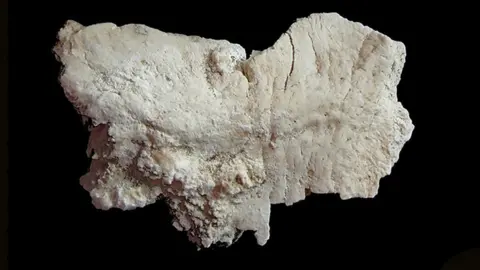Stonehenge: First residents from west Wales
 Getty Images
Getty ImagesResearchers have shown that cremated humans at Stonehenge were from the same region of Wales as the stones used in construction.
The key question was to understand the geographic origin of the people buried at Stonehenge.
The key innovation was finding that high temperatures of cremation can crystallise a skull, locking in the chemical signal of its origin.
The findings have been published in the journal Scientific Reports.
The first long-term residents of Stonehenge, along with the first stones, arrived about 5,000 years ago.
Why does it matter?
While it is already known that the "bluestones" that were first used to build Stonehenge were transported from 150 miles (240 km) away in modern-day Pembrokeshire, almost nothing is known about the people involved.
The scientists' work shows that both people and materials were moving between the regions and that, for some of these people, the move was permanent.
When their lives ended, their cremated remains were placed under the ancient monument in what is now Wiltshire.
 Christie Willis, UCL
Christie Willis, UCLLead author Dr Christophe Snoeck compared the levels of different forms, or isotopes, of the element strontium against a national database to work out where the cremated individuals spent the last years of their lives.
Strontium is present in many bedrocks. And different geographical areas have distinctive strontium signatures. So by matching the strontium "fingerprints" in human remains to the strontium profiles of different geographical regions, a person's place of origin can be roughly determined.
Dr Snoeck, who is now an international expert in cremation following a PhD at the University of Oxford, said that "about 40% of the cremated individuals did not spend their later lives on the Wessex chalk where their remains were found."
Who were these people?
While the news of Stonehenge has tended to focus on "how" and "why" it was built, the question of "who" built it is often forgotten. With this new method, the authors were able to be precise about where the cremated persons came from.
Unfortunately, the cremation destroyed other chemical signals that might tell us who these people were, and their social rank.
 JustinHMoss
JustinHMossHowever, Dr Rick Schulting, senior author on the study, said: "These must have been important people. Being buried at Stonehenge is the ancient equivalent of being interred in Westminster Abbey today."
He said: "The evidence suggests that some of the people buried at Stonehenge must have spent much of their last 10 or so years in Wales. Although we tend to think that immigration is a new thing, these people were obviously able to travel substantial distances across difficult terrain."
Where next?
Now that this new technique has been proven to work, the scientists would like to sample other cremated remains at the iconic Stonehenge site to see if the Welsh connection was transient or sustained over many years. The study will also open up research on many other cremated remains that have been found across the UK.
They would also like to work out how the remains were cremated, and why cremation is sometimes preferred over burial.
The lead scientist, Christophe, has already moved on. Since completing his PhD at Oxford, he has immigrated to Belgium, where he is coordinating a large project on migration and cremation in pre-historic Belgium.
Follow Angus on Twitter
